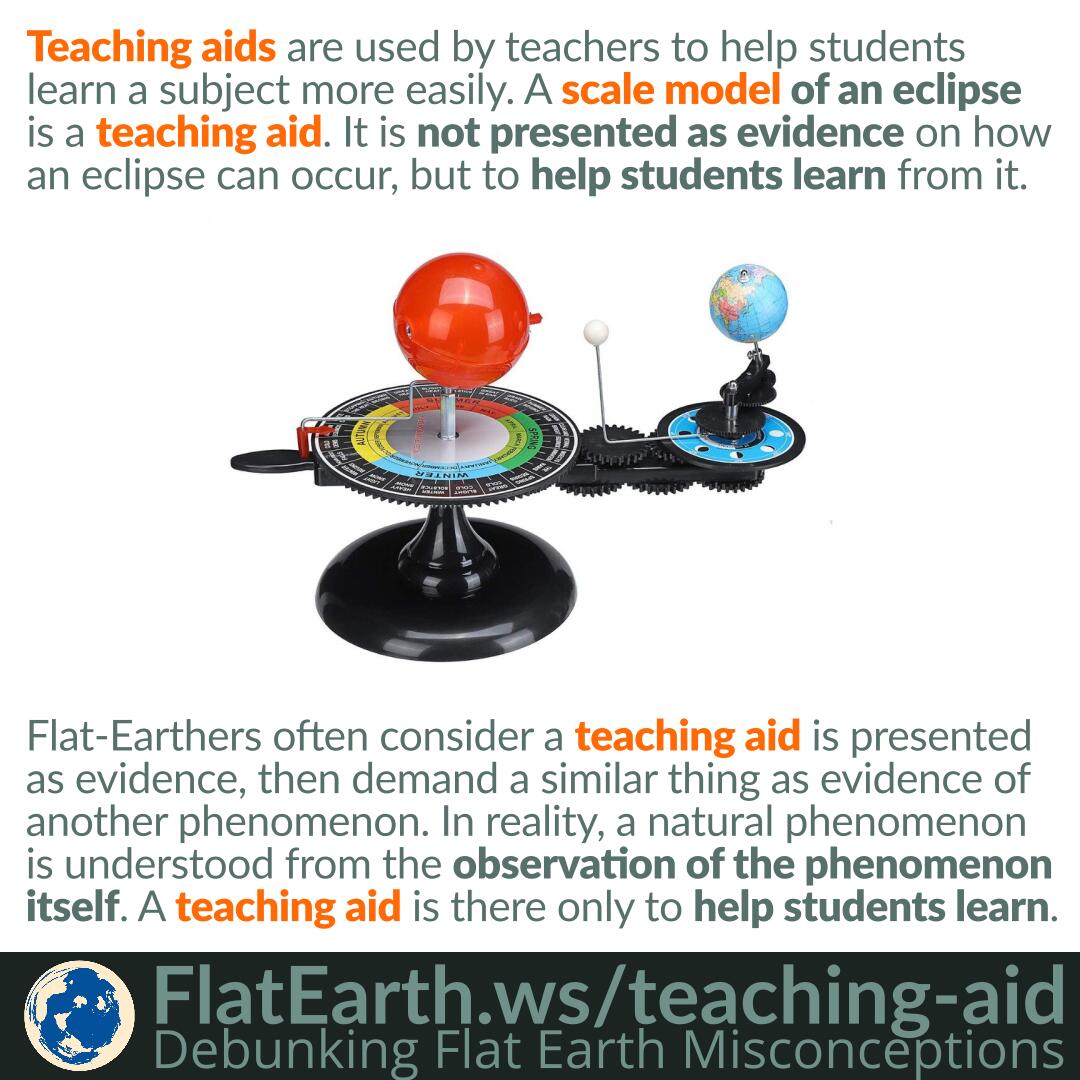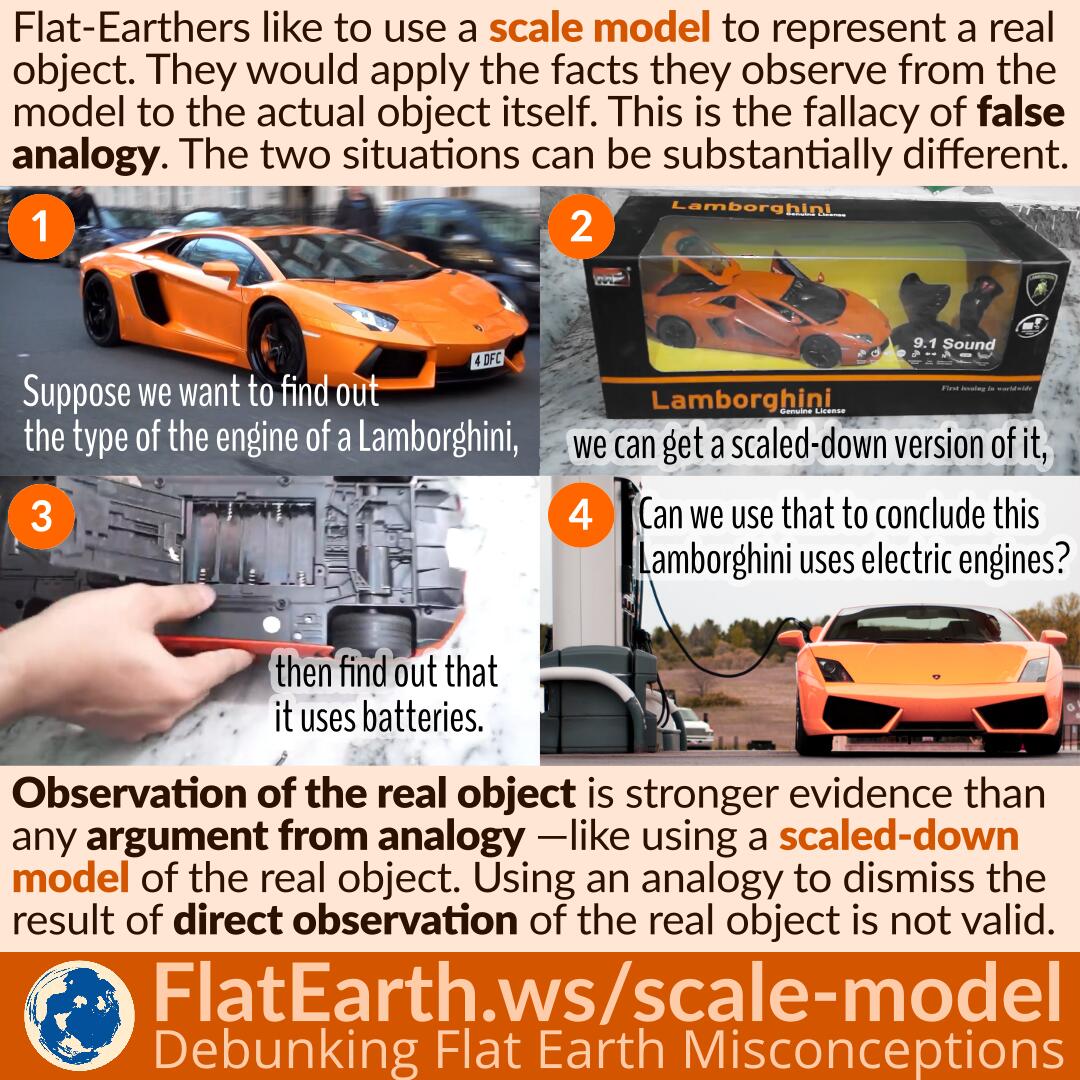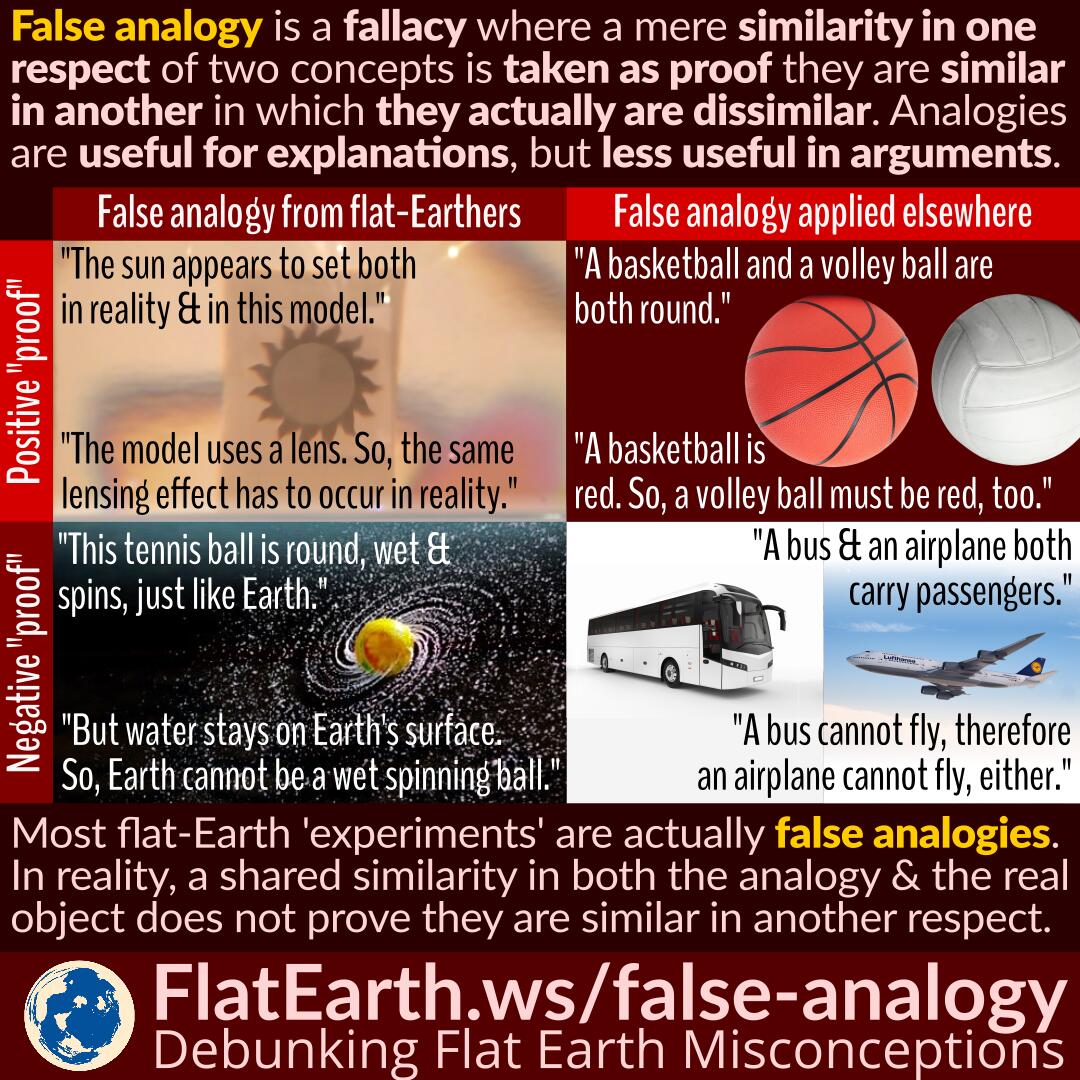Teaching aids are used by teachers to help students learn a subject more easily. A scale model of an eclipse is a teaching aid. It is not presented as evidence about how an eclipse can occur, but to help students to understand the mechanism of an eclipse.
Flat-Earthers often incorrectly consider a teaching aid is presented as if it is evidence of a phenomenon, then demand a similar thing as “evidence” of another phenomenon. In reality, a natural phenomenon is studied from the observation of the phenomenon itself. A teaching aid is there merely to help students learn.




